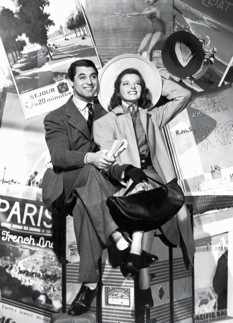In Nathanael West's The Day of the Locust (1939), the character at the focus of the novel, if not quite its hero, is Tod Hackett, an artist who has come to Los Angeles to design sets and costumes for the movies. Hackett is fascinated by a character type he finds there—"the kind of person who comes to California to die"—who seems to be the clay out of which an American fascist could be modeled. Here's his first description of the species:
Scattered among these masquerades were people of a different type. Their clothing was somber and badly cut, bought from mail-order houses. While the others moved rapidly, darting into stores and cocktail bars, they loitered on the corners or stood with their backs to the shop windows and stared at everyone who passed. When their stare was returned, their eyes filled with hatred. At this time Tod knew very little about them except that they had come to California to die.
When, in preparation for writing my New Yorker article "It Happened One Decade," I began reading around in the literature of the nineteen thirties, I had the impression that the idea of going to California to die was metaphoric. I was surprised to discover in Edmund Wilson's American Jitters (1932) that it wasn't. Wilson wrote that at the time, San Diego led the United States in suicides, perhaps because "a great many sick people come to live in San Diego." If one allows for the poetic license of substituting Los Angeles for San Diego, it seems probable that West was inspired by Wilson's description:
The climate of Southern California, so widely advertised by Chambers of Commerce and Southern California Clubs, but probably rather unhealthy with its tepid enervating days and its nights that get suddenly chill, brings invalids to San Diego by the thousand. If they have money to move about and have failed to improve in the other health centers, the doctors, as a last resort, send them to San Diego, and it is not uncommon for patients to die just after being unloaded from the train. In the case of "ideational" diseases like asthma—diseases which are partly psychological—the sufferers have a tendency to keep moving away from places, under the illusion that they are leaving the disease behind. And when they have moved to San Diego, they find they are finally cornered, there is nowhere farther to go. According to the psychoanalysts, the idea of the setting sun suggests the idea of death. At any rate, of the five-hundred-odd suicides during the period of fifteen years mentioned above [i.e., between 1911 and 1927], 70 per cent were put down to "despondency and depression over chronic ill health."
I'm quoting here from the revised 1957 version of Wilson's essay "The Jumping-Off Place," because that's the version I happen to have access to at the moment, but the quotes of Wilson in my article come from the original American Jitters, which Wilson published in 1932, when his youthful vitriol was not yet tempered and his faith in Marxism still intact.

